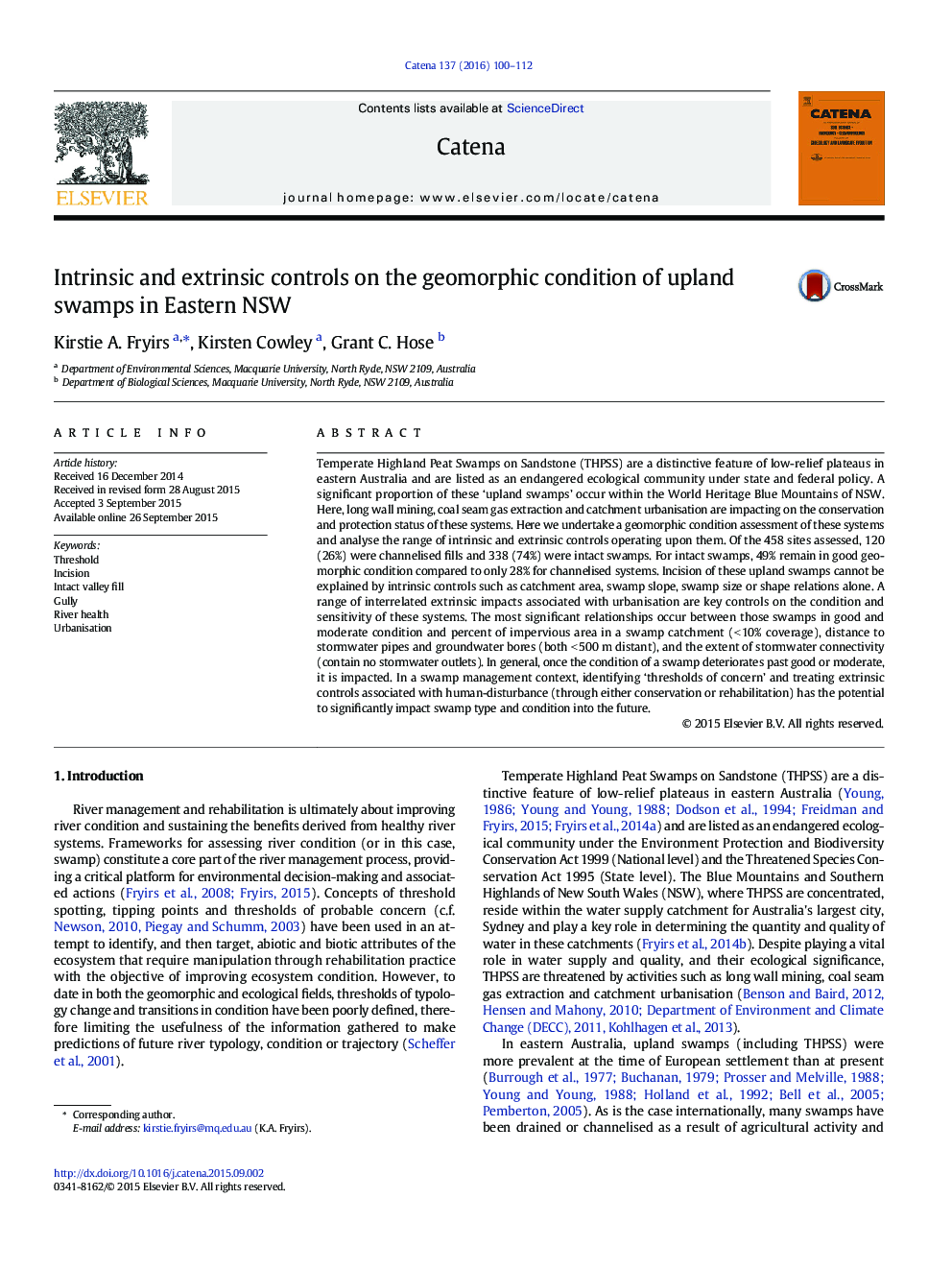| کد مقاله | کد نشریه | سال انتشار | مقاله انگلیسی | نسخه تمام متن |
|---|---|---|---|---|
| 6407936 | 1629215 | 2016 | 13 صفحه PDF | دانلود رایگان |

- Temperate Highland Peat Swamps on Sandstone are an endangered ecological community.
- Of 458 sites, 120 (26%) are channelised fills and 338 (74%) are intact swamps.
- Incision of these upland swamps cannot be explained by intrinsic controls.
- Extrinsic impacts associated with urbanisation controls swamp condition.
- Once swamp condition deteriorates past moderate, it is severely impacted.
Temperate Highland Peat Swamps on Sandstone (THPSS) are a distinctive feature of low-relief plateaus in eastern Australia and are listed as an endangered ecological community under state and federal policy. A significant proportion of these 'upland swamps' occur within the World Heritage Blue Mountains of NSW. Here, long wall mining, coal seam gas extraction and catchment urbanisation are impacting on the conservation and protection status of these systems. Here we undertake a geomorphic condition assessment of these systems and analyse the range of intrinsic and extrinsic controls operating upon them. Of the 458 sites assessed, 120 (26%) were channelised fills and 338 (74%) were intact swamps. For intact swamps, 49% remain in good geomorphic condition compared to only 28% for channelised systems. Incision of these upland swamps cannot be explained by intrinsic controls such as catchment area, swamp slope, swamp size or shape relations alone. A range of interrelated extrinsic impacts associated with urbanisation are key controls on the condition and sensitivity of these systems. The most significant relationships occur between those swamps in good and moderate condition and percent of impervious area in a swamp catchment (<Â 10% coverage), distance to stormwater pipes and groundwater bores (both <Â 500Â m distant), and the extent of stormwater connectivity (contain no stormwater outlets). In general, once the condition of a swamp deteriorates past good or moderate, it is impacted. In a swamp management context, identifying 'thresholds of concern' and treating extrinsic controls associated with human-disturbance (through either conservation or rehabilitation) has the potential to significantly impact swamp type and condition into the future.
Journal: CATENA - Volume 137, February 2016, Pages 100-112